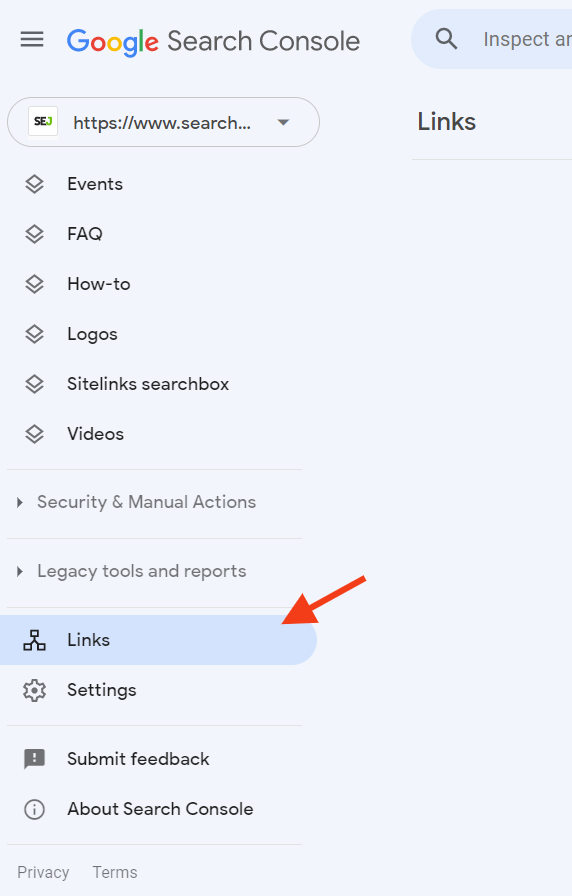Your website needs traffic – the more, the better. And to do that, you need to be ranked highly in search engine results.
How do you do that?
With search engine optimization, of course.
So what happens after you’ve gone through your content, added keywords, and beefed up your technical SEO, and you’re still not ranking how you want?
What do you do then?
There’s one key area you need to focus on: building backlinks.
But how do you do that? And what are backlinks, anyway? Are all backlinks good backlinks?
To find out the answers to these questions and more, read on.
What Are Backlinks?
Backlinks are simply links from one website to another.
Sometimes called “incoming links” or “inbound links,” backlinks are one of the most important parts of search engine optimization.
Useful tools for webpage creators, backlinks make it easy to cite statistics, source claims, add context, or make recommendations, among other things.
There’s also another type of link called internal links, which are links between pages within the same website. These also play a role in SEO, but we won’t go into that here.
If it’s something you’re interested in learning more about, follow this internal link to an excellent Search Engine Journal piece on the best practices for using internal links in SEO. (See what we did there?)
Why Are Backlinks Important?
Now that we’ve covered what exactly a backlink is, it’s time for the $10,000 question: Why do they matter?
The most basic answer to that question is that your site’s backlinks pass PageRank, and search engines then use this in their algorithm (along with many other factors) to help determine the quality of your website and where it should rank in results pages.
They indicate your site’s popularity with users and are a vital part of any SEO strategy.
Backlinks also play an important role in your discoverability, as both users and search engine crawlers will follow links from external sites to your page.
“Great,” you may be saying right now. “Let’s get out there and start generating as many incoming links as possible, so we start rocketing up in search results.”
Slow down. You didn’t really expect that to be all it takes, did you?
If search engine optimization were as easy as all that, there would be a lot of SEO professionals looking for a new line of work.
First, let’s talk about good versus bad links.
What Makes a Good Backlink?
Back in 1998, when Google was just getting started, it implemented an algorithm named PageRank. One of the things this took into account when deciding on how well a webpage matched a user query was backlinks.
But even in those early days, not all backlinks were created equal. And while the quantity of your incoming links is factored into your search ranking, the quality also plays an important role.
Let’s break it down: Quantity-wise, the more sites that link to your webpage, the stronger the signal to Google that your content is valuable and, therefore, worth linking to.
And generally speaking, if your page has more backlinks than a similar page, it will appear higher in organic search results.
This is because each time a site links to your content, it is essentially vouching for its accuracy and veracity.
But don’t for a second think that just any site pointing to your webpage is a good thing. Not only can some links do nothing for you, but some can actually hurt your search ranking. This means you need to be concerned with the quality of your inbound links.
It’s the internet version of judging someone by the company they keep – which makes sense if you think about it.
For example, which site would you trust more: one linked to by a governmental agency, a reputable university, or a well-respected foundation – or the one that’s only linked to by your Uncle Joe’s conspiracy blog?
Obviously, the former is going to carry a lot more weight, not just for visitors but for search engines as well. Thus, it should be no surprise that a page with fewer links from high-quality sites will outrank a competitor with more links from disreputable sources.
And speaking of disreputable sources, if your site gets backlinks from link farms or other unnatural links, you actually risk being penalized by Google. If you have spammy sites linking to your pages, the best thing you can do is disavow them to avoid being seen as guilty by association. We’ll talk more about that in a bit.
But it’s not just domain reputation that tells Google that inbound link A is more valuable than inbound link B. It also looks at the referring site’s relevance to the topic.
Why Are Backlinks Important?
If your Fantasy Football blog has an inbound link from ESPN and one from Crochet.com, Google will make a (logical) judgment call that the first link is more valuable.
We can follow several wormholes about link placement, anchor text, and the impact of nofollow links on your search rankings, but let’s leave that discussion for another day.
For a detailed explanation of determining the value of a backlink, be sure to read this piece.
How Many Backlinks Do I Have?
Now that you know the importance of inbound links and their value, it’s time to start thinking about the ones you already have. How do you know which sites are directing traffic your way?
There are two ways to do this: one that only tells you who’s linking to your site, and one you can use to snoop on the competition’s inbound links.
Checking Your Links With Google Search Console
Google Search Console should be your best friend if you’re a webmaster. It’s packed with all sorts of useful tools and reports to help you track performance and fix issues – and it’s free.
Once you have created an account and verified your site, you can use it to track your backlinks. In the sidebar, there’s an option called “Links.”
 Screenshot from Google Search Console, October 2022
Screenshot from Google Search Console, October 2022If you click on that, it will show you details of both your internal and external links. The external ones are the ones we’re interested in right now.
Under external links, you can run three reports: top linking pages, top linking sites, and top linking texts. Using these, you can determine who is linking to you and from where.
Checking Links With A Third-Party Tool
The only downside of using Google Search Console’s link tracking is that it only allows you to see details about your site.
But by using third-party backlink checkers like Majestic SEO, Semrush, and Ahrefs, you can see what your competition is doing, as well – and maybe steal some of those links.
Now that we’ve discussed what backlinks are, why they matter, and how to track them, let’s jump into what you’re really here for: building backlinks.
How Do I Get Backlinks?
There are several ways to get other sites linking to yours, but most of them require a bit of effort on your part.
The first and easiest way to get links is to pay for them. But before you pull out your credit card, pay attention to this one important caveat: if Google catches you participating in a paid link-building scheme, you will be penalized.
Buying links has been a matter of some debate for SEO experts for a long time, and some will swear by it, while others insist it’s not worth the risk.
You make your own decisions, but our advice is that you give organic link-building a try before considering if paid links are a path you want to explore.
The next way to create backlinks is by creating them. This generally means submitting your website to business directories or commenting on blogs and forums with a link to your site in the signature. These links can be of varying quality. For more information, watch the video below.
A better way to generate inbound links is by earning them. But, of course, this is a little trickier.
To earn backlinks, you must have useful content that provides value to others.
For example, you may have a webpage that lists your five favorite immersion blenders. This page can provide value not just for blender manufacturers, who will appreciate the shout-out, but also for people shopping for a new blender or kitchen appliance websites.
Statistics content is always a good way to attract quality backlinks. Statistics are a great way to prove a point and overcome objections.
By providing relevant statistics about your niche, you’ll establish your site as one of authority, and generate a lot of inbound links. Or, you can run surveys and publish the results on your blog as news.
Then you can promote your news via social media, where others may find your survey data useful and link to it from their articles.
If your content is good and it speaks to a niche, it will slowly begin to generate backlinks all on its own.
But what if you can’t wait that long? What if you want backlinks right now?
Promote your content via social or paid campaigns to the target audience. Someone may find your article useful and link to it.
Or use one of the third-party tools mentioned in the previous section to find a relevant page with many incoming links. Then create better content than the competition’s, and ask the linking domains to direct their links to you instead.
You can also look for broken links or those that redirect to a 404 page. Once you’ve found one of these on a relevant site, send the webmaster an email notifying them. And don’t forget to suggest they replace the broken link with your page on the same topic.
For more in-depth information on these strategies, plus others you can use, be sure to read this article.
Start Building Those Links
So, there you have it: a crash course on link building. By this point, you should have a good idea about what backlinks are, why they’re important, and how to build them.
Just don’t forget that, like all things SEO, it’s a marathon, not a sprint. You’re extremely unlikely to see results overnight.
But remain patient, create great content, and look for opportunities to build links; you’ll have loads of incoming links in no time.
More resources:
